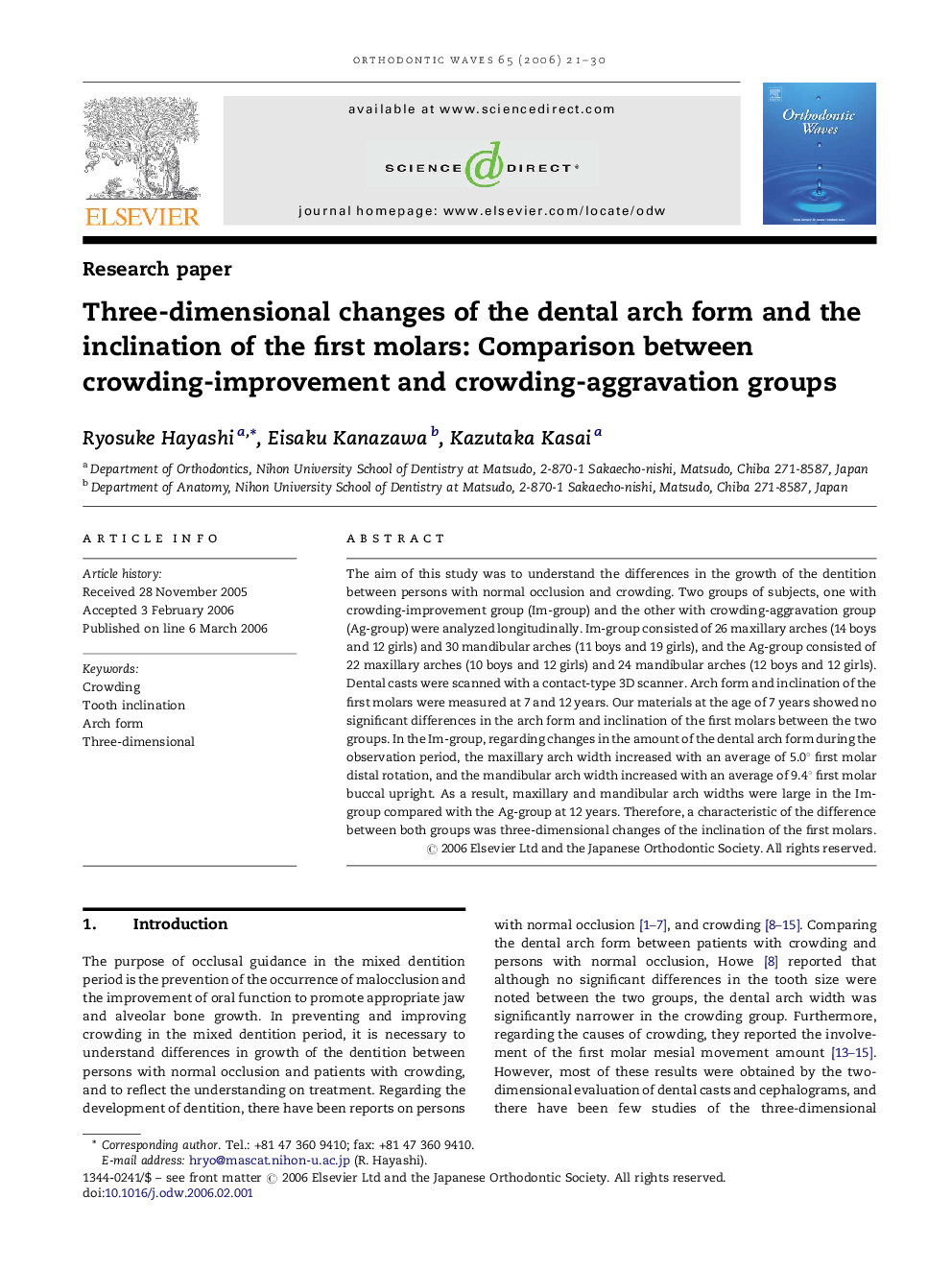| Article ID | Journal | Published Year | Pages | File Type |
|---|---|---|---|---|
| 3170745 | Orthodontic Waves | 2006 | 10 Pages |
The aim of this study was to understand the differences in the growth of the dentition between persons with normal occlusion and crowding. Two groups of subjects, one with crowding-improvement group (Im-group) and the other with crowding-aggravation group (Ag-group) were analyzed longitudinally. Im-group consisted of 26 maxillary arches (14 boys and 12 girls) and 30 mandibular arches (11 boys and 19 girls), and the Ag-group consisted of 22 maxillary arches (10 boys and 12 girls) and 24 mandibular arches (12 boys and 12 girls). Dental casts were scanned with a contact-type 3D scanner. Arch form and inclination of the first molars were measured at 7 and 12 years. Our materials at the age of 7 years showed no significant differences in the arch form and inclination of the first molars between the two groups. In the Im-group, regarding changes in the amount of the dental arch form during the observation period, the maxillary arch width increased with an average of 5.0° first molar distal rotation, and the mandibular arch width increased with an average of 9.4° first molar buccal upright. As a result, maxillary and mandibular arch widths were large in the Im-group compared with the Ag-group at 12 years. Therefore, a characteristic of the difference between both groups was three-dimensional changes of the inclination of the first molars.
